Các Công Nghệ AI, IOT & Big Data thay đổi bộ mặt ngành HVAC
AI, IoT & Big Data: Changing the Face of HVAC O&M
Over the last 4 -5 years, three technological advancements are again changing the way O&M of chillers and HVAC systems is executed - IoT, Big Data analytics and AI. This article gives a brief overview of these disruptors and how the HVAC industry is changing for the better.
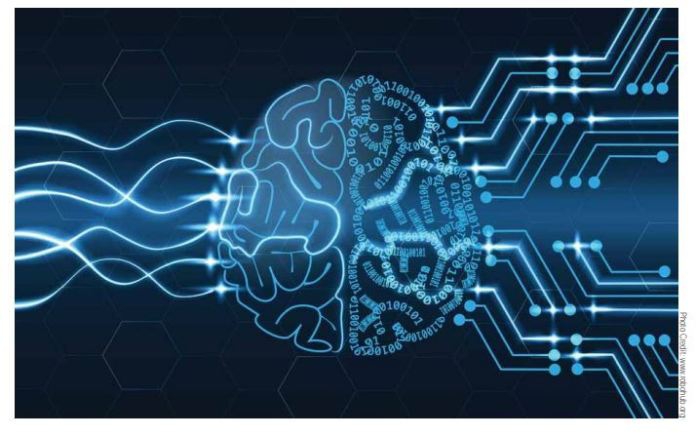
In the good old days (not so long ago really), a chiller plant operator would go to the plantroom, open up a big log book and enter the parameters of the chiller plant. The readings would typically be from analog pressure gauges and temperature gauges (many of which would be showing readings that were just about close to the real values). Once entered into the log book, that was the end of the data recording till the next hourly reading. What happened in between the readings to the chiller was left to the compressor and the evaporator to handle.
Modern HVAC systems in general, and chillers in particular, have come a long
way from the day of analog read outs, and sophisticated chiller management systems are standard such systems. The systems are integrated with the building management systems and not only do the operations and management (O&M) team have access to the status of the system (monitoring), they are also able to in many installations also operate remotely
(control) the system. There has thus been a significant level of automation in the HVAC sector, giving a higher degree of monitoring as well as control capability to the O&M teams. Sensors capture thousands of data points within a second and the plant is ‘watched’ by the controller continuously rather than the once an hour approach of the earlier days. This enables better management of the system and in turn prolonging the equipment’s life.
Over the last 4-5 years, three technological advancements are again changing the way O&M of chillers and HVAC systems is executed – Internet of Things (IoT), Big Data analytics and Artificial Intelligence (AI). This article gives a brief overview of these disruptors and
how the HVAC industry is changing for the better.
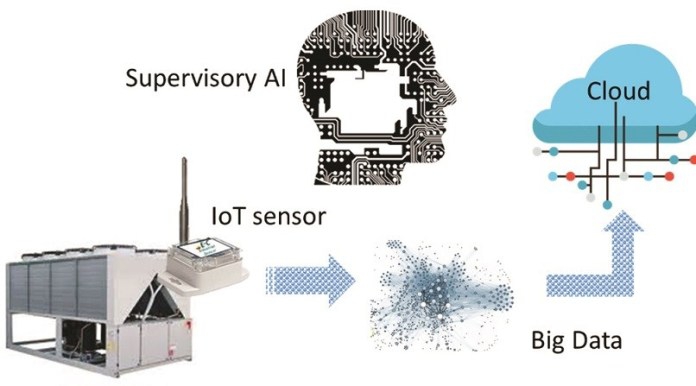
Figure 1: IoT, Big Data and AI
Three Musketeers of the Future – IoT, AI and Big Data
Like the characters of the famous Alexandre Dumas novel, IoT, AI and Big Data are going to help chart a new path for the HVAC industry (in a way, the change has already started). Figure 1 shows how the three trends are connected. Let’s understand what these technologies or approaches are.
Internet of Things (IoT): Smart TV is the IoT, fancy ceiling fan which can be controlled by an app from phone over Wi-Fi is IoT, the wireless energy meter sending real time energy reading to the utility company is the IoT. Essentially, the IoT is a network of devices and sensors connected across the Internet across the globe. These devices are used for control (on/off) as well as collect data from systems, equipment, components etc on a real time basis. As of end of 2017, there were approximately seven billion IoT devices
already existing in the world. This number is expected to go up to 20 billion by 2020 and the industry will be a 3-billion-dollar industry – that is the scale of the IoT deployment. Out of these approximately three billion devices will be used in the building sector in HVAC, electrical, space management etc areas. The picture at the bottom shows the real time IoT
devices in use across the world.
Big Data: Imagine the number of readings that these 7 billion devices are taking at any given time – a connected pressure sensor checking the discharge pressure of the gas in a chiller, once every second will take 86,400 data a day – that is a lot of readings, running into trillions of bytes of data. That is the scale that one has to think of when one talks of Big Data. Once one has access to this data, then it is a matter of using powerful
algorithm and computers (both big and small) to analyse the data and identify patents in the data. These patterns could be minor changes in the discharge pressure that could be an
indication of a fault condition in the compressor, or repeated spikes in certain values which can give an indication of an abnormal condition. These insights can then be used to proactively intervene and make adjustments, correction or changes in the equipment to enhance the functioning of the system. The characteristics of Big Data are the three Vs – Velocity, Volume, Variety.
Artificial Intelligence (AI): While it is sometimes seen as a scary word (thanks to Skynet of the Terminator movie series), AI is at present not the threat that many think it may be (It may turn out in the future though). AI in the context of the HVAC industry that we are discussing is essentially smart computer programs that are used to help the O&M team optimise the system performance and improve over time through continuous feedback loops. This frees up the O&M teams to spend time on more high-level aspects
of their functions like long-term system reliability planning, upgrade management etc. AI is the next step in automation where machines learn (machine learning) to improve system
performance, converting information into data and data into insight.

IoT Devices connected to the Internet
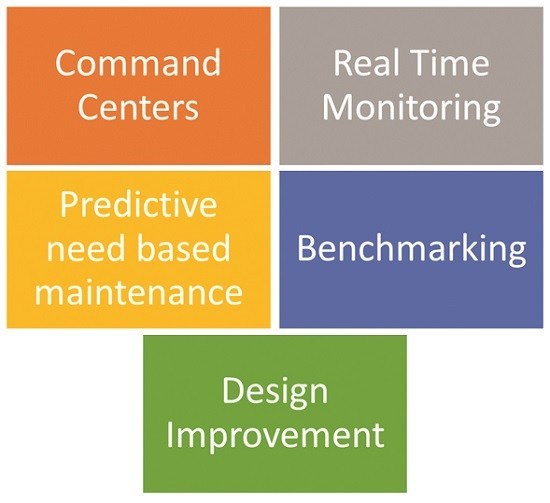
Figure 2: Focus areas for IoT, Big Data and AI implementation
How HVAC O&M is changing through IoT, AI and Big Data
Some aspects of these three transformational technologies are already in use the HVAC industry and operators worldwide are benefiting from the insights that these systems provide. The key areas where the convergence of IoT, Big Data and AI is impacting the HVAC O&M sector are shown in figure 2:
• Real time monitoring for optimising system performance: There are approximately 300 data points that a typical building HVAC system will capture at various intervals – electricity, cooling tower parameters, pumping system readings, chiller controls and operating data points, and AHU readings etc. Currently, the data collection is distributed in most cases and even it is integrated through a BMS, the correlations are not so evident. With IoT enables floor-wise energy meters, occupancy sensors to track employee usage of floor, wireless temperature sensors on the work floors to update localised temperature
fluctuations, remote flow sensors to identify disruptions in flow patterns etc, the intelligent IoT and AI based system will be able to optimise thesystem performance to suit the
localised conditions. Real time local area temperature and weather conditions are analysed by the smart sensors, getting feed from the metrological department. The data is fed to the chiller control system and based on machine learning and AI algorithms, the chiller is started 30 minutes later than the standard starting time when the outside temperature is
lower on a particular day due to a sudden thunderstorm.
• Predictive maintenance through embedded systems and AI: Advanced IoT based vibration sensors are now available that can be placed in the bearing housing of pumps. These sensors record the vibration patterns of the pump shaft continuously, uploading the data to an analytics engine. The trend of the vibration signature, bearing manufacture bearing L10 life data and comparisons with thousands of pump failure data points is used to assess the condition of the pump in real time and anticipate failure before they occur or before the condition deteriorates enough to effect system performance. Figure 3 shows
how this process works. The savings in O&M costs is substantial as there is lower down time and lower maintenance efforts as maintenance is need and condition based.
• Command Centers: With data now being available ‘online, all the time’, the requirement of localised control and monitoring reduces significantly. A number of OEMs have already deployed smart chiller management systems that feed a central command center which is manned by the OEMs experts. These systems are able to identity off design operations and possible system defects in real time and intimate the operators to take corrective actions.
With increased penetration of IoT devices and lowering of costs of AI engines, the command centers will not only cater to the HVAC system, but the whole building which will enable further optimisation of the HVAC systems performance. Another advantage of command centers is the ability to monitor multiple buildings with lesser resources on the ground, thus, lowering O&M costs.
• Improving Design using IoT, Big Data: When a manufacturer has thousands of data points of his/her equipment performance in the real world (and not just factory tests), the design team can analyse the data and get insights to reduce failure or improve efficiency.
• Benchmarking: How does one really know that his/her HVAC systems are working at their best? As the famous saying goes, what cannot be measured cannot be managed. Benchmarking is a globally recognised approach to assess one’s infrastructure performance with the industry or a defined standard. With IoT and Big Data, it will be easier to compare one building with another not only on the whole building operation but down to the AHU level and pump level. This will allow O&M teams to fine tune the systems, improve on efficiencies and give inputs to the equipment upgrade/retrofit programs.
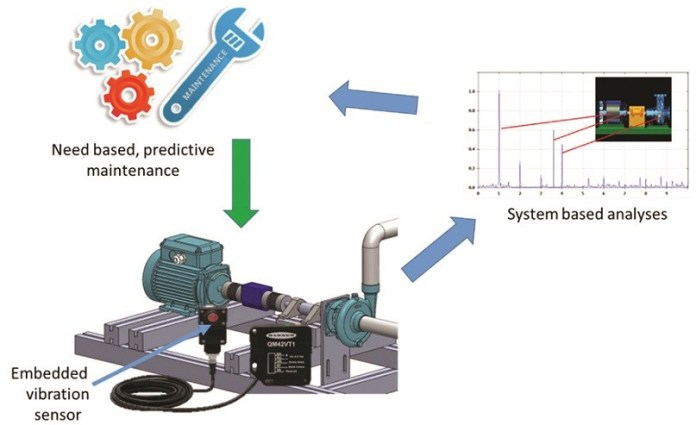
Figure 3: Real time data analytics
AI – What the near future holds for the HVAC industry
While Big Data driven though the proliferation of IoT is an emerging trend, the impact is already being felt in the HVAC sector at least in mature markets and more use cases are being developed. The next disruption will be through the use of AI. What and how exactly will AI transform the HVAC industry is not easy to guess – predicting the future is a risky business as we see all around us. However, AI will be an integral part of the HVAC eco system is certain. The enhanced computing power of off the shelf machines, lowering of costs of AI development and the ubiquitous ‘Cloud’ that allows data to be valuable everywhere will be the drivers for the integration of AI with HVAC. Figure 4 shows one possible use of AI that can be a reality in the very near future. Typically, building managers
want to know what’s happening in their building HVAC system – what is the energy consumption, trends as compared to last year, uptime status etc. Currently, they get this data either through intelligent dash board built over computerised maintenance management systems or they use the traditional way – ask the shift engineer who checks his records and tells the chief engineer what he wants. With powerful AI systems such as the current favourite ‘Alexa’ from Amazon, we will soon be witness to the chief engineer asking the connected, AI driven device for an update of the HVAC system. Quite an exciting future that beholds us.
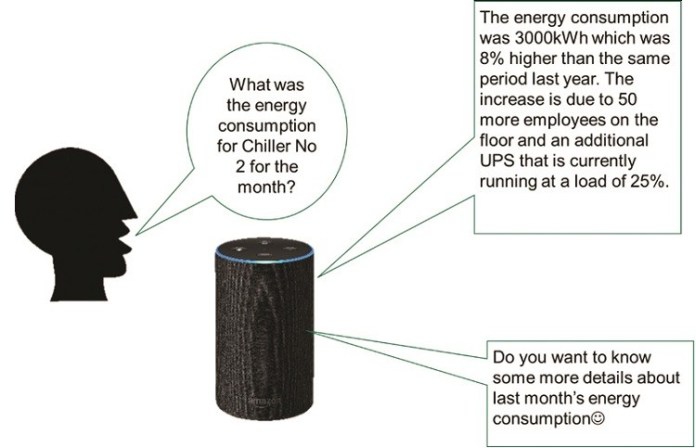
Figure 4: AI for HVAC management
Conclusion
Digitisation of the world around us has already happened – we have convergence of technologies right on the palm of our hand. Smartphones have apps that can give a rough indication of the lux levels of a room or the vibration patterns of an equipment. Thus, the HVAC industry will see a rapid increase in the integration of ecology and this will be primarily through the triad of IoT, Big Data and AI. While there are still many challenges associated with these three technologies such as cost, security, reliability etc., the efficiencies and cost optimisations that they can bring will be drivers to overcome these constraints. The O&M teams that will embrace these advances faster, will be able to leverage them to greater advantage.




